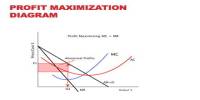The Division of Labor indicates that the primary production process is divided into numerous simple sections, and each part is taken by various workers who specialize in producing that specific part. One group is working on the legs, another on the backs, another on the seats, and yet another on the assembly, and the last group is polishing the chairs. This is an example of division of labor.
The division of labor has been divided into different forms by the economists which can be explained as follows:
(1) Simple Division of Labour:
When manufacturing is divided into distinct segments and numerous people collaborate to finish the work, but the contribution of each worker is unknown, this is referred to as a simple division of labor. This refers to the division of people in society based on jobs or trades. Each person chooses a specific type of employment for which he is most fitted. As a result, in a community, some are teachers, others are doctors, others are merchants, brokers, and so on. For example, when a large log of wood is carried by a group of people, it is difficult to determine how much labor was performed by each individual worker.
(2) Complex Division of Labour:
The complex division of labor occurs when production is divided into several components and each part is executed by separate people who have specialized in it. When a community’s complete work in production is divided into different processes and each process is assigned to a different person, this is referred to as “Process Specialisation.” In a shoe factory, for example, one worker makes the top section, another prepares the soles, a third stitches them, a fourth polishes them, and so on. Shoes are made in this manner. It is an example of a complicated division of labor. Under process specialization there is division and each division or process is undertaken by one person, the Division of Labour so implied is termed as “Complex Division of Labour”.
(3) Occupational Division of Labour:
When the production of a commodity becomes the worker’s occupation, this is referred to as the occupational division of labor. When an entire process is divided into sub-processes and the work is finished, this is referred to as the Division of Labour of sub-processes. As a result, diverse jobs have arisen as a result of the manufacture of various items. India’s caste system is possibly the best illustration of occupational division of labor. In this case, one process is insufficient without the assistance and cooperation of another. Occupational division of labor refers to the work of farmers, cobblers, carpenters, weavers, and blacksmiths. This is often referred to as the “Personal Division of Labor.”
(4) Geographical or Territorial Division of Labour:
Sometimes, for a variety of reasons, the manufacturing of commodities is concentrated in a single location, state, or country. This is also known as “industry location.” This sort of division of labor occurs when people or factories that have specialized in the manufacture of a specific commodity are found in a specific location.
When a specific location or region is specialized in a specific industry or in the production of a specific commodity, this is referred to as a territorial or geographical Division of Labor. That location may be the most geographically advantageous for the production of that commodity. The geographical or territorial division of labor refers to this. For example, Assam has specialized in the production of tea, whereas the textile industry is localized in Mumbai and the jute production in West Bengal.
















